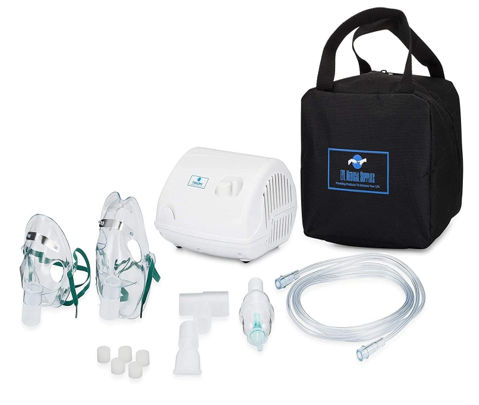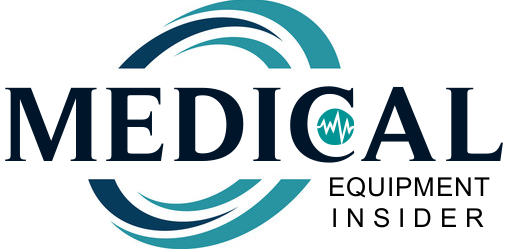As the vibrant colors of Autumn fill the air and temperatures begin to drop, knowing common fall medical emergencies and how to prevent them becomes vital as many people look forward to the cool breeze, falling leaves and cozy sweaters.
The fall season brings unique health challenges that can lead to medical emergencies if not properly managed. Understanding these risks helps individuals, families and communities stay safe and healthy throughout the season.
Below are common fall medical emergencies and how to prevent them to stay protected.
Common Fall Medical Emergencies and How to Prevent Them
1.Respiratory Emergencies
The shift to cooler, drier air during fall can trigger or worsen breathing problems, especially among people with chronic respiratory diseases. Indoor heating and crowding also increase exposure to infections.
Common Emergencies:
- Exacerbations of Asthma: Cold air, mold spores and seasonal allergens common in Autumn can trigger attacks.
- Chronic Obstructive Pulmonary Disease (COPD) Exacerbations: This is common due to respiratory infections or air pollution.
- Pneumonia and Influenza: Viral and bacterial infections in Fall can progress rapidly to respiratory failure if untreated.
- Bronchiolitis in Children: A viral infection (often caused by Respiratory Syncytial Virus – RSV) that leads to wheezing and difficulty in breathing.
Warning Signs:
- Shortness of breath
- Wheezing or noisy breathing
- Chest tightness or pain
- Persistent cough
- Bluish discoloration of lips or fingertips (cyanosis)
Prevention:
- Get the flu vaccine early in the season.
- Avoid exposure to cold, dusty or moldy environments.
- Use prescribed inhalers regularly for asthma or COPD.
- Seek medical attention promptly for severe cough, fever or breathing difficulty.

2. Cold-Related Emergencies
While not as cold as winter, fall nights can become unexpectedly chilly, especially in certain regions. People who are outdoors for long periods or those with poor heating at home are most at risk.
Common Emergencies:
- Hypothermia: Occurs when the body loses heat faster than it can produce it, leading to dangerously low body temperature.
- Frostbite: Early frost in late fall can cause freezing of skin and underlying tissues.
Warning Signs:
- Shivering, confusion, slurred speech
- Pale, cold, or numb skin
- Weak pulse or drowsiness
Prevention:
- Dress in layers and cover the head, hands, and feet when outdoors.
- Keep homes well-heated and dry.
- Check on elderly neighbors or homeless individuals during cold nights.
3. Traumatic Emergencies
Fall often brings wet leaves, rainfall and shorter daylight hours — all of which increase the risk of accidents and injuries.
Common Emergencies:
- Slips and Falls: Wet leaves and early frost make walkways slippery, especially for older adults.
- Motor Vehicle Accidents: Roads become slick and reduced daylight increases visibility problems.
- Sports and Outdoor Injuries: Hiking, football, and hunting are popular fall activities that can lead to trauma.
Warning Signs:
- Severe bleeding
- Loss of consciousness
- Obvious deformity or fracture
- Severe pain or swelling
- Chest or abdominal pain after impact
Prevention:
- Wear shoes with non-slip soles.
- Ensure good lighting around the home and stairways.
- Drive carefully and maintain vehicle brakes and tires.
- Use protective gear for sports and outdoor activities.
4. Cardiac Emergencies
Cold air causes blood vessels to constrict and increases the heart’s workload. Physical exertion such as raking leaves or shoveling can trigger heart problems, especially in people with existing heart disease.
Common Emergencies:
- Heart Attack (Myocardial Infarction)
- Sudden Cardiac Arrest
Warning Signs:
- Chest pain or pressure (may radiate to the arm, neck, or jaw)
- Shortness of breath
- Sweating, nausea, or light-headedness
Prevention:
- Avoid sudden, heavy physical exertion in cold weather.
- Warm up before outdoor work.
- Manage blood pressure, cholesterol, and diabetes.
- Seek immediate help if chest discomfort lasts more than a few minutes.
5. Allergic Reactions and Anaphylaxis
Fall allergens like ragweed pollen and mold spores peak during this season. Some people also suffer from severe allergic reactions to insect stings, which remain common in early autumn.
Warning Signs:
- Runny or congested nose, itchy eyes
- Wheezing or coughing
- Swelling of lips, face, or throat
- Difficulty breathing (a sign of anaphylaxis – a medical emergency)
Prevention:
- Limit outdoor activities during high pollen days.
- Keep windows closed and use air purifiers.
- Carry prescribed antihistamines or epinephrine auto-injectors if you have severe allergies.
6. Dehydration and Electrolyte Imbalance
Many people drink less water in fall because they don’t feel as thirsty. However, dehydration still occurs, especially in older adults who may have reduced thirst sensation.
Warning Signs:
- Dry mouth, dizziness, dark urine
- Confusion or fatigue
- Rapid heartbeat
Prevention:
- Drink plenty of fluids even if you’re not thirsty.
- Limit alcohol and caffeine, which increase fluid loss.
- Include water-rich fruits and vegetables in your diet.
7. Mental Health Crises and Seasonal Affective Disorder (SAD)
Shorter daylight hours and less sunlight can affect mood and energy levels. Some people experience Seasonal Affective Disorder; a form of depression related to changes in seasons.
Warning Signs:
- Persistent sadness or low mood
- Loss of interest in daily activities
- Sleep disturbances or appetite changes
- Thoughts of self-harm or hopelessness
Prevention and Management:
- Spend time outdoors during daylight hours.
- Engage in regular physical activity.
- Maintain social connections.
- Seek professional help for persistent depressive symptoms.
8. Infectious Disease Outbreaks
Fall marks the beginning of flu season and respiratory viruses tend to spread easily as people gather indoors. Foodborne illnesses can also occur due to poor food handling during holiday events.
Common Emergencies:
- Influenza and COVID-19 infections
- Gastroenteritis (stomach flu)
Warning Signs:
- High fever
- Severe vomiting or diarrhea
- Difficulty breathing or dehydration
Prevention:
- Get vaccinated against influenza and COVID-19.
- Practice good hand hygiene.
- Ensure safe food storage and cooking practices.
9. Fractures in the Elderly
Older adults are at higher risk of falls and fractures due to weaker bones and balance issues. Hip, wrist, and spine fractures are most common.
Prevention:
- Install handrails and remove clutter from walkways.
- Use walking aids if necessary.
- Encourage balance and strength exercises.
General Fall Safety Tips
- Stay updated on vaccinations (especially flu and COVID-19).
- Dress warmly and layer clothing appropriately.
- Keep first aid kits and emergency numbers handy.
- Eat balanced meals and stay hydrated.
- Manage chronic diseases (asthma, diabetes, heart disease) effectively.
- Check expiry dates of all medicines and replace outdated ones.
- Review family emergency plans and ensure everyone knows what to do during an emergency.
- Keep a list of emergency phone numbers visible on the fridge or near the phone.
- Schedule medical checkups early in the season, especially for chronic illnesses.
Conclusion
Fall is a beautiful season, but it brings several potential health hazards that can lead to medical emergencies if ignored. By recognizing warning signs early and taking preventive measures, most of these emergencies can be avoided.
Stay alert, stay warm and enjoy the beauty of autumn in good health!

